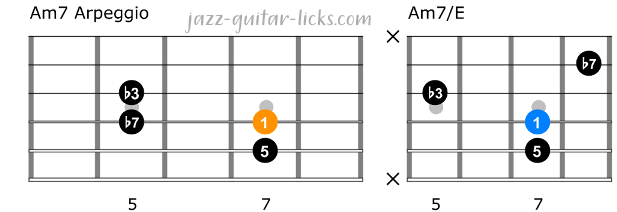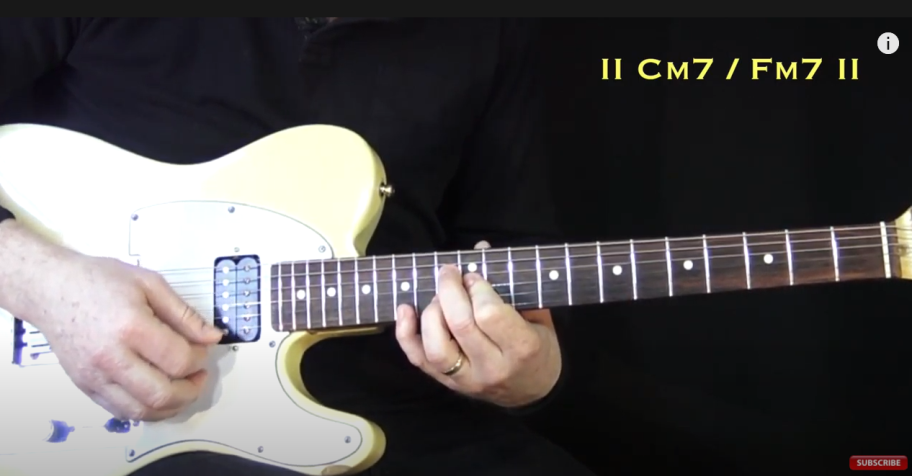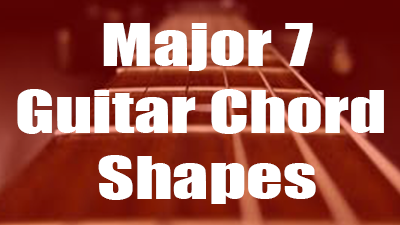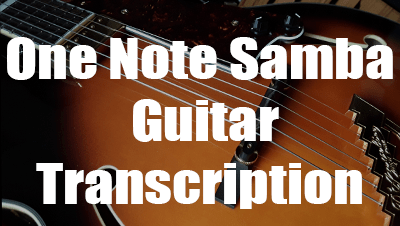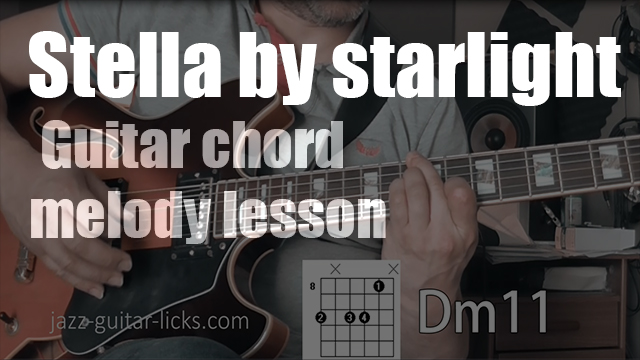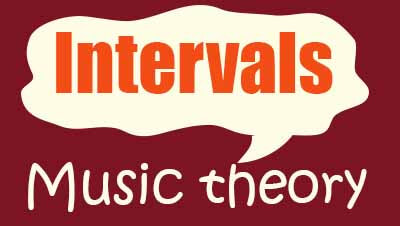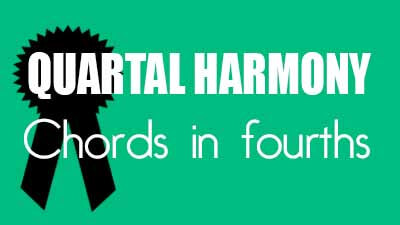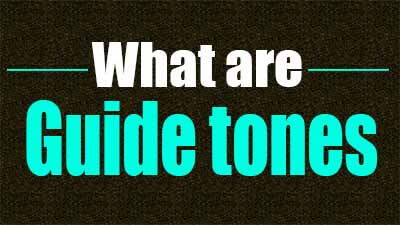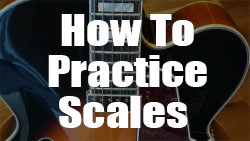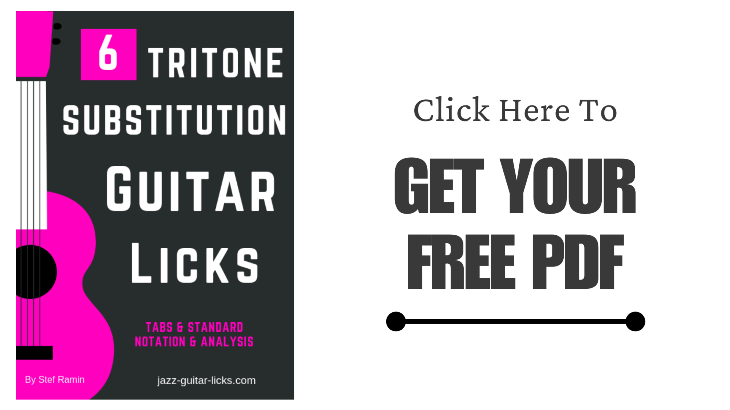guitar lesson
-
Arpeggio And Chord Connection - Maj7, 7, min7, m7b5, dim7, min6 and 6 - Warm-up Exercise For Beginners
- By jazz-guitar-licks
- On 2023-09-06
- 0 comments
Arpeggios are a fundamental aspect of music theory and play a pivotal role in creating expressive melodies, harmonies, and improvisations across various musical genres. In this exploration of basic arpeggios, we will learn how to connect Maj7, 7, min7, m7b5, dim7, min6, and 6 arpeggios (by moving only one note at a time) and how to make the link with basic chord shapes.
-
Blue Bossa - Guitar Arrangment For Beginners - Latin Jazz Lesson
- By jazz-guitar-licks
- On 2022-02-15
- In Teacher Spotlight - Jazz Guitar Lessons
- 0 comments
Lesson By Thomas Berglund
This video lesson is an easy chord/melody guitar arrangement of Blue Bossa, a very popular instrumental latin jazz tune composed by Kenny Dorham. The video includes a lesson where Thomas shows and discusses the arrangement and also provides tips to make your own arrangements.
-
Pentatonic Scales Over 2 5 1
- By jazz-guitar-licks
- On 2021-09-03
- In Teacher Spotlight - Jazz Guitar Lessons
- 0 comments
Lesson by Joost Zoeteman
This video lesson is taken from JGL's facebook group "Jazz Guitar Lessons". Guitarist Joost Zoeteman explains how different types of pentatonic scales can be applied to a 2 5 1 chord progression.
-
28 Major 7 Guitar Chord Diagrams
- By jazz-guitar-licks
- On 2020-08-28
- In Chords / Voicings
- 0 comments
This blog post provides 28 positions with intervals to play major seventh chords (maj7) on guitar. Three types of voicings are used : drop 2, drop 3, drop 2-4 and their inversions.
The diagrams are organized this way:
-
Variations Of Jazz Blues Progression - 10 Guitar Exercises - YouTube Video Lesson
- By jazz-guitar-licks
- On 2020-02-12
- 0 comments
A new video has been published on the YouTube channel. It contains 10 exercises with chord shapes and numeral analysis about different types of variations of the jazz blues progression for jazz guitar rhythm.
-
One Note Samba - A.C Jobim - Transcription For Guitar
- By jazz-guitar-licks
- On 2018-12-01
- In Jazz Guitar Lessons
- 0 comments
One note samba is a song composed by Antonio Carlos Jobim. The title refers to the main melody of the song, which consists of a serie of identical notes (F and Bb in this arrangement for guitar) with a syncopated rhythm typical of bossa nova and a number of chords typical of this genre.
-
Jazz up Your Blues - Guitar Lesson
- By jazz-guitar-licks
- On 2018-09-22
- In Guest Posts
- 0 comments
 One of the most daunting shifts for any guitarist can be entering the world of jazz guitar. We’ve all read essential jazz guitar books, tutorials and watched videos by those in the know and it’s a vast world full of new theoretical and practical concepts.
One of the most daunting shifts for any guitarist can be entering the world of jazz guitar. We’ve all read essential jazz guitar books, tutorials and watched videos by those in the know and it’s a vast world full of new theoretical and practical concepts.
Most guitar players get into playing through rock/blues and find jazz later on their ability spectrum. If you understand blues, you can start to make some small changes which will add a jazz dynamic to your playing. In this lesson we will cover some of those small changes you can integrate into your playing today. -
Why Jazz Guitarists Should Study The CAGED Method
- By jazz-guitar-licks
- On 2017-12-24
- In Guest Posts
- 2 comments
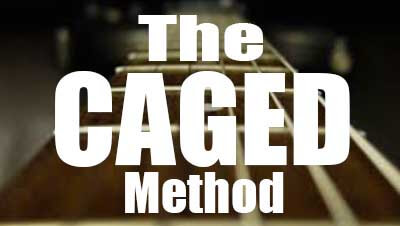 When I first joined my high school jazz band, it was a humbling experience. I knew my major scales and modes, but only with the roots on the E and/or A string. This worked fine for playing pop music, but the way jazz progressions were always changing chords with each measure, my hands were constantly getting lost.
When I first joined my high school jazz band, it was a humbling experience. I knew my major scales and modes, but only with the roots on the E and/or A string. This worked fine for playing pop music, but the way jazz progressions were always changing chords with each measure, my hands were constantly getting lost.If I was playing a C major line in eighth position, how did I switch to a Bb mixolydian scale without jumping my hand up or down and making the improvisational idea totally disjointed ? I could never understand how jazz guitarists could keep their ideas going as the chords changed from moment to moment. And how did players like Joe Pass know how to run an improvised line right into a chord voicing? Additionally, as I progressed to the higher registers of the guitar, I could never tell where I was in the scale anymore. It seemed impossible!
-
10 Jazz Blues Tunes Every Beginning Guitarist Should Know
- By jazz-guitar-licks
- On 2017-12-05
- In Jazz Guitar Lessons
- 2 comments
Building Your Jazz Blues Repertoire
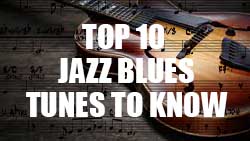 A big part of learning jazz guitar means building his own repertoire of pieces. Here is a list of 10 jazz blues songs every beginning guitarist should know.
A big part of learning jazz guitar means building his own repertoire of pieces. Here is a list of 10 jazz blues songs every beginning guitarist should know.This short list covers a range of jazz blues chord progressions and their different variations (form, tonality, Harmonic structure) with a brief analysis and also represents the most played jazz blues tunes at jam sessions.
-
Stella by Starlight - Jazz guitar chord melody lesson
- By jazz-guitar-licks
- On 2017-04-11
- 1 comments
A new video is online on the youtube channel. It is a quick jazz guitar chord melody arrangement with chord diagrams of the famous jazz standard "Stella by Starlight" (Victor Young).
-
What's a Half-Diminished Chord (m7b5)
- By jazz-guitar-licks
- On 2017-04-07
- 2 comments
This guitar lesson explains what is m7b5 chord, how to play it on guitar and how to apply it in common harmonic contexts as major and minor II-V-I progressions.
-
List of Musical Intervals - Music Theory
- By jazz-guitar-licks
- On 2017-04-06
- In Music Theory
- 2 comments
What is an Interval ?
An interval is the distance between two notes, each one is represented by a number (1,2,3,4,5,6,7...) and a prefix related to its quality ("M" for major, m for minor, "P" for perfect, "d" for diminished and "A" for augmented). There are five different qualities.
An interval can be melodic, when the tones are successive (played one after the other) and harmonic, if the notes are stacked (played simultaneously). Knowing the name of each interval on guitar and on any other instrument is very important.
Intervals are essential elements of music theory. Intervals are very useful to understand how chords and scales are built. This article shows you how to make the difference between them.
-
Chords in Fourths - Quartal Harmony
- By jazz-guitar-licks
- On 2017-01-07
- 2 comments
What is Quartal Harmony?
To enrich and modernize the harmonization of a piece it is common to use fourth chords. They can replace some original chords to bring more melodic freedom into improvisation and more tension in harmony.
Since the late 1950s, harmony in fourths has played a very important role in the development of modern jazz. Musicians and composers have used a lot the quartal harmony.
Among them, the great American pianist McCoy Tyner, who, is a master in the art of playing quartal chords. Mike Stern, Herbie Hancock, Chick Corea, Bill Evans and Kurt Rosewinkel have also used this technique.
In this lesson with tabs and shapes, we will see how to build chords in fourths, how to harmonize the major scale with and how to use them in comping.
-
What Are Guide Tones and How to Use Them
- By jazz-guitar-licks
- On 2016-12-14
- 2 comments
Guide tones are the notes in a chord which leads or gives harmonic pull toward the next chord, these are an excellent way to study and absorb the sound of any chord progression.
Guide tones are used to outline chord progressions in an improvisation.
They are most of the time the 3rd and the 7th because this is what determines whether a chord is major, minor, or dominant.
This jazz guitar lesson explains how to solo over common jazz chord progressions by using guide tones.
-
How To Practice Scales On Guitar
- By jazz-guitar-licks
- On 2016-10-27
- In Jazz Guitar Lessons
- 0 comments
You'll find in this lesson some tips and trick for practicing scales, enrich and develop your playing or simply warming-up before a gig.
